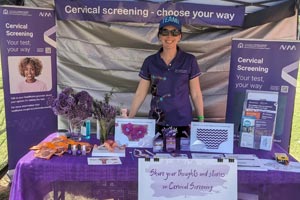Cervical Screening
Cervical cancer is a worldwide health issue and is one of the most preventable of all cancers.
Australia has one of the lowest rates of cervical cancer in the world. This is largely due to the success of the National Cervical Screening Program (NCSP) (external site), introduced in 1991 as a joint Australian, State and Territory Government initiative. In Australia, all women and people with a cervix aged 25 to 74 years who have ever had any sexual contact are encouraged to have a Cervical Screening Test every five years.
The WA Cervical Cancer Prevention Program (WACCPP)
The WACCPP is a state arm of the NCSP. The key functions of the WACCPP are to:
- Deliver and support health promotion initiatives that maximise cervical screening participation (with a focus on women that are under-screened or have never screened)
- Build the capacity of health professionals to deliver high quality cervical screening services
- Manage the WA Cervical Screening Register
National Strategy for the Elimination of Cervical Cancer in Australia
The WACCPP welcomes the release of the National Strategy for the Elimination of Cervical Cancer (Strategy), a pathway to achieve equitable elimination of cervical cancer as a public health problem by 2035. The Strategy includes objectives, pathways, and actions to meet three targets that will help Western Australia reach equitable elimination:
- 90% of eligible people will be vaccinated against HPV – this includes girls and boys
- 70% of eligible people will be screened every 5 years
- 95% of eligible people will receive the best possible treatment for precancer and cancer
The full Strategy can be found on the National Cervical Screening Program (external site)
Important update
As of 1 July 2022, anyone eligible for a Cervical Screening Test under the National Cervical Screening Program (NCSP), i.e. women and people with a cervix aged 25 to 74 years who have ever had any sexual contact, will have the choice to screen either through:
- self-collection of a vaginal sample using a simple swab (unless a co-test is indicated) or
- clinician-collection of a sample from the cervix using a speculum.
These changes mean that healthcare providers may start to see an increase in the volume of requests from patients to use self-collection as an option for their Cervical Screening Test. For more information, view the latest National Cervical Screening Program update on the self-collection eligibility expansion (PDF).






